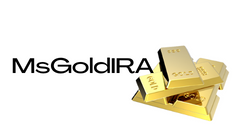
Bitcoin's Downtrend on the 4-Hour Chart
Bitcoin's trajectory on the 4-hour chart reveals a clear downtrend characterized by consistent lower highs and lower lows. The price experienced a significant drop from approximately $43,440 to $40,513, indicating increased selling pressure. The current bearish candlestick formation further suggests the possibility of the downtrend persisting.
Bearish Run on the Daily Chart
On the daily chart, Bitcoin previously experienced a bullish run, with prices escalating from around $35,378 to $44,729. However, the trend has recently inverted, with a sequence of downturns. The intensified selling volume on these down days could be indicative of a strong bearish sentiment, possibly forecasting further declines.
Neutral Oscillator Readings
Oscillator readings present a more neutral stance. The relative strength index (RSI) at 52, Stochastic at 33, and the commodity channel index (CCI) at -27 all hover in the neutral range. The average directional index (ADI) at 37 and the awesome oscillator at 2230 also maintain this neutrality. However, the momentum indicator at -3227 and the moving average convergence/divergence (MACD) level at 1092 suggest selling action, adding complexity to the current market analysis.
Divergent Moving Averages
The moving averages offer a divergent view. Short-term exponential (EMA) and simple moving averages (SMA) for 10 and 20 days indicate a sell signal, while longer-term EMAs and SMAs (30, 50, 100, 200 days) signal a buying opportunity. The 200-day EMA and SMA at $32,057 and $30,845 showcase a bullish long-term trend amidst short-term volatility.
Cautionary Approach for Traders
Given the current scenario, caution is advised for traders. For short positions, a break below the last low of $40,513 could be a potential entry point, with a stop loss above the most recent high or a lower high. Conversely, for long positions, a reversal pattern such as a bullish engulfing candle or a higher low setup accompanied by increased buying volume would be key indicators to watch.
Bullish Perspective
The long-term perspective for bitcoin remains optimistic. Despite recent downward trends on the 4-hour and daily charts, the stronger moving averages over longer periods (30, 50, 100, and 200 days) showcase a robust bullish undercurrent. The presence of the 200-day EMA and SMA positioned well below the current price level suggests that this could be a temporary consolidation phase before a potential upward breakout.
Bearish Perspective
The immediate outlook for bitcoin leans towards bearishness. The prevailing downward momentum observed in the 4-hour and daily charts, coupled with short-term moving averages signaling sell, paints a cautionary picture for the near future. The consistent lower highs and lower lows, along with increased selling volume, indicate strong bearish sentiment.
What are your thoughts on bitcoin's market action on Monday morning? Share your opinions in the comments section below.
Frequently Asked Questions
What is a Precious Metal IRA (IRA)?
A precious metal IRA allows for you to diversify your retirement savings in gold, silver, palladium and iridium. These rare metals are often called “precious” as they are very difficult to find and highly valuable. They make excellent investments for your money and help you protect your future from inflation and economic instability.
Bullion is often used to refer to precious metals. Bullion refers actually to the metal.
Bullion can be purchased through many channels including online retailers and large coin dealers as well as some grocery stores.
A precious metal IRA allows you to invest directly in bullion, rather than buying stock shares. This ensures that you will receive dividends each and every year.
Precious metal IRAs are not like regular IRAs. They don't need paperwork and don't have to be renewed annually. Instead, you pay only a small percentage tax on your gains. Plus, you can access your funds whenever you like.
Who has the gold in a IRA gold?
The IRS considers gold owned by an individual to be “a type of money” and is subject taxation.
You must have gold at least $10,000 and it must be stored for at the least five years in order to take advantage of this tax-free status.
The purchase of gold can protect you from inflation and price volatility. But it's not smart to hold it if your only intention is to use it.
If you plan to eventually sell the gold, you'll need a report on its value. This could impact the amount of capital gains taxes your owe if you cash in your investments.
A financial planner or accountant should be consulted to discuss your options.
How do you withdraw from an IRA that holds precious metals?
First, you must decide if you wish to withdraw money from your IRA account. You should also ensure that you have enough money to cover any fees and penalties associated with withdrawing funds.
Consider opening a taxable brokerage instead of an IRA if it is possible to pay a penalty if your withdrawal is made before the deadline. This option is also available if you are willing to pay taxes on the amount you withdraw.
Next, calculate how much money your IRA will allow you to withdraw. The calculation is influenced by several factors such as your age at withdrawal, the length of time you have owned the account and whether or not you plan to continue contributing to retirement plans.
Once you have an idea of the amount of your total savings you wish to convert into cash you will need to decide what type of IRA you want. Traditional IRAs allow for you to withdraw funds without tax when you turn 59 1/2. Roth IRAs, on the other hand, charge income taxes upfront but you can access your earnings later and pay no additional taxes.
Finally, you'll need to open a brokerage account once these calculations are completed. To encourage customers to open accounts, brokers often offer signup bonuses and promotions. Avoid unnecessary fees by opening an account with your debit card, rather than your credit card.
You will need a safe place to store your coins when you are ready to withdraw from your precious metal IRA. Some storage facilities can accept bullion bar, while others require you buy individual coins. Before you choose one, weigh the pros and cons.
Bullion bars require less space, as they don't contain individual coins. You will need to count each coin individually. However, keeping individual coins in a separate place allows you to easily track their values.
Some prefer to keep their money in a vault. Others prefer to store them in a safe deposit box. No matter what method you use, it is important to keep your bullion safe so that you can reap its benefits for many more years.
Statistics
- (Basically, if your GDP grows by 2%, you need miners to dig 2% more gold out of the ground every year to keep prices steady.) (smartasset.com)
- Gold is considered a collectible, and profits from a sale are taxed at a maximum rate of 28 percent. (aarp.org)
- The price of gold jumped 131 percent from late 2007 to September 2011, when it hit a high of $1,921 an ounce, according to the World Gold Council. (aarp.org)
- This is a 15% margin that has shown no stable direction of growth but fluctuates seemingly at random. (smartasset.com)
- If you take distributions before hitting 59.5, you'll owe a 10% penalty on the amount withdrawn. (lendedu.com)













